Information Technology > QUESTIONS & ANSWERS > WGU C846 Business of IT – Applications Questions and Answers 100% Pass (All)
WGU C846 Business of IT – Applications Questions and Answers 100% Pass
Document Content and Description Below
WGU C846 Business of IT – Applications Questions and Answers 100% Pass Recall Definitions (Two questions on Exam) ✔✔-- Service ✔✔A means of enabling value co-creation by facilitating outc... omes desirable to customers—without their having to manage cost and risk. Utility ✔✔A functionality offered by a product or service to meet a particular need. Warranty ✔✔An assurance that a product or service meets agreed-upon requirements. Customer ✔✔The person who defines service requirements and takes responsibility for the outcome of service consumption. User ✔✔Someone who uses the provided services. Service Management ✔✔A set of specialized organizational capabilities for enabling value for customers in the form of services. Sponsor ✔✔The person authorizing the budget for the consumed service. Describe Key Concepts (Two questions on Exam) ✔✔-- Cost ✔✔The amount of money spent on a specific activity or resource. Value ✔✔The perceived benefits, usefulness, and importance of something. Usually measured by how much the customer is willing to pay for the service. Organization ✔✔A person or group with its internal functions, and with its own set of responsibilities, authorities, and relationships necessary to achieve its objectives. Outcome ✔✔A result as perceived by a stakeholder—that is enabled by one or more outputs. Output ✔✔A tangible or intangible deliverable of an activity. Risk ✔✔A possible event that could cause harm or loss, or make the achievement of objectives more difficult. Describe Concepts of Services (One question on Exam) ✔✔ Service Offering ✔✔A formal description of one or more services designed to address the needs of its target consumer, and include goods, access to resources, and service actions. Service Relationship Management ✔✔Joint activities that the service provider and service consumer both engage in to ensure continued value co-creation, according to agreed-upon and available service offerings. Service Provision ✔✔Activites an organization engages in to provide services, such as possibly supplying goods, fulfillment of agreed-upon service actions, and ensuring user access to these resources. Service Consumption ✔✔Management of consumer resources necessary to use the service Describe the Nature, use and interaction of the Guiding Principles (One question on Exam) ✔✔-- ITIL Guiding Principles' Key Message ✔✔A guiding principle is a recommendation that guides an organization in all circumstances, regardless of changes in its goals strategies type of work or management structure. A guiding principle is universal and enduring. Explain Use of Guiding Principles (Five questions on Exam) ✔✔-- Focus on Value (Guiding Principle #1) ✔✔-Understand their expected outcomes, how each service contributes to them, and how the service consumers perceive the service provider. Continually collect feedback regarding value—not merely at the start of the service relationship. -Everything the organization does must map, directly or indirectly, to stakeholder value. Start Where You Are (Guiding Principle #2) ✔✔-The current state should be investigated and observed directly to make sure its fully understood -Don't start from scratch, use available services and processes. Progress Iteratively with Feedback (Guiding Principle #3) ✔✔-Comprehend the whole, but do something. Often, the greatest enemy of this is the desire to understand and account for everything. This can lead to what's known as "analysis paralysis," whereby so much time is spent analyzing the situation that nothing is done about it. Understanding the big picture is no doubt important, but so is making progress! -Don't attempt everything at once! Even huge initiatives can and should be accomplished iteratively. Collaborate and Promote Visibility (Guiding Principle #4) ✔✔-Communicate in a way the audience can hear. In an attempt to bring different stakeholders into the loop, many organizations use very traditional methods of communication, or they use the same method for all communication. Selecting the right method and message for each audience is critical to success. -Work together across boundaries for greater buy-in, more relevance to objectives, and increased the likelihood of long-term success. Think and Work Holistically (Guiding Principle #5) ✔✔-Recognize the complexity of the systems. Different levels of complexity require different heuristics for decision making. Applying methods and rules designed for a simple system can be ineffective, or even harmful, in a complex system, in which relationships among components are complicated and tend to change more frequently. -No service—or element used to provide it—stands alone. Outcomes achieved by the service provider and service consumer will suffer unless the organization works on the service as a whole, not merely on its component parts. Keep it Simple and Practical (Guiding Principle #6) ✔✔-Ensure that there's value. Every activity should contribute to the creation of value. -If a value stream, process, service, action, or metric fails to provide value or produce a useful outcome, eliminate it. Optimize and Automate (Guiding Principle #7) ✔✔-Selecting what to do and how to do so should be performed according to what creates the best value for the organization. -Resources of all types, particularly human resources, should be used to their best effect. -People should intervene only when doing so truly contributes value. Describe the ITIL Service Value System (One question on Exam) ✔✔-- Service Value System (SVS) ✔✔This describes how all components and activities of an organization work together as a system to enable value creation. Each organization's SVS interfaces with other organizations, thus forming an ecosystem that services to facilitate value for the organizations, their customers, and other stakeholders. This includes components such as: governance, SVC, and Continual Improvement Describe Nautre of Service Vaule Chain (One question on Exam) ✔✔-- Service Value Chain (SVC) ✔✔An operating model which outlines the key activities required to respond to demand and facilitate value realization through the creation and management of products and services. Describe the interconnected nature of the service value chain and how this supports value streams (One question on Exam) ✔✔-- Service Value Chain's Nature ✔✔To carry out a certain task, or respond to a particular situation, organizations create service value streams. They are specific combinations of activities and practices, and each one is designed for a particular scenario. Once designed, value streams should be subjected to continual improvement. Describe the purpose of each value chain activity (One question on Exam) ✔✔-- Plan ✔✔To ensure a shared understanding of the vision, current status, and improvement direction for all four dimensions of service management, and all products and services throughout the organization. Improve ✔✔To ensure continual improvement of products, services, and practices across all value chain activities and the four dimensions of service management. Engage ✔✔To provide a good understanding of stakeholder needs, transparency, and continual engagement and good relationships with all stakeholders. Design & Transition ✔✔To ensure that products and services continually meet stakeholder expectations for quality, costs, and time to market. Obtain/Build ✔✔To ensure that service components are available when and where they are needed, and that they meet agreed specifications. Deliver & Support ✔✔To ensure that services are delivered and supported according to agreed specifications and stakeholders' expectations. Recall Purpose of ITIL Practices (Five questions on Exam) ✔✔-- Information Security Management ✔✔Protects the information needed by the organization to conduct its business. Responsible for confidentiality, integrity and availability Relationship Management ✔✔Establishes and nurtures the links between the organization and its stakeholders at strategic and tactical levels. Supplier Management ✔✔Ensures that the organization's suppliers and their performances are managed appropriately to support the seamless provision of quality products and services. IT Asset Management ✔✔The set of business practices that support life cycle management and strategic decision making for the IT environment. Monitoring and Event Management ✔✔To systematically observe services and service components, and record and report selected changes of state identified as events. Release Management ✔✔To make new and changed services and features available for use. Service Configuration Management ✔✔Used to track all of the individual Configuration Items (CI) in an IT system which may be as simple as a single server, or as complex as the entire IT department. Deployment Management ✔✔To plan, schedule, control the build, test, deployment of releases, and to deliver new functionality required by the business while protecting the integrity of existing services. Continual Improvement ✔✔An ongoing organizational activity of continuous re-evaluation performed at all organizational levels to ensure that performance continually meets stakeholders' expectations. Supports organizations in their day-to-day improvement efforts Change Enablement ✔✔To maximize the number of successful service and product changes by ensuring that risks have been properly assessed, authorizing changes to proceed and managing the change schedule. Incident Management ✔✔An unplanned interruption to a service or reduction in the quality of service. The purpose of the incident management practice is to minimize the negative impact of incidents by restoring normal service operation as quickly as possible. Problem Management ✔✔Prevents incidents from occuring and ultimately aims for no incidents. Reduce the likelihood and impact of incidents by identifying actual and potential causes of incidents. Service Request Management ✔✔Supports the agreed quality of service by handling all predefined, user-initiated service requests in an effective and user-friendly manner. Service Desk ✔✔Captures demand for incident resolution and service requests. It should also be the entry point and single point of contact for the service provider with all of its users. Service Level Management ✔✔Sets clear business-based targets for service levels and ensures that delivery of services is properly assessed, monitored, and managed against these targets. Recall ITIL Terms (Two questions on Exam) ✔✔-- IT Asset ✔✔Any company-owned information, system or hardware that is used in the course of business activities. Event ✔✔Any change of state that has significance for the management of a service or other CI (configuration item). Configuration Item (CI) ✔✔Any component or other service asset that needs to be managed in order to deliver an IT service. Change ✔✔The addition, modification, or removal of anything that could have a direct or indirect effect on services. Incident ✔✔An unplanned interruption to a service or reduction in the quality of service. To resolve one of these usually requires an emergency change. Problem ✔✔A cause, or potential cause, of one or more incidents. Known Error ✔✔A problem that's been analyzed but not resolved. ITIL Practices (17 questions on Exam) ✔✔This is the make or break section; this is 43% of the exam is covering this area and the area that needs your undivided attention if you want to pass. This list of items include: continual improvement, change enablement, incident management, problem management, service request management, service desk, service level management, and the Continual Improvement Model below). What is the Vision? (Continual Improvement #1) ✔✔Business vision, mission, goals and objectives Where Are We Now? (Continual Improvement #2) ✔✔Peform baseline assessments Where Do We Want to Be? (Continual Improvement #3) ✔✔Define measurable targets How Do We Get There? (Continual Improvement #4) ✔✔Define the improvement plan Take Action (Continual Improvement #5) ✔✔Execute improvement actions Did We Get There? (Continual Improvment #6) ✔✔Evaluate metrics and KPIs How Do We Keep The Momentum Going? (Conitnual Improvement #7) ✔✔Cycle back to 'What is the Vision' step [Show More]
Last updated: 1 year ago
Preview 1 out of 13 pages
.png)
Also available in bundle (1)
.png)
WGU C846 Bundled Exams Questions and Answers with Certified Solutions
WGU C846 Bundled Exams Questions and Answers with Certified Solutions
By Nutmegs 1 year ago
$20
11
Reviews( 0 )
Document information
Connected school, study & course
About the document
Uploaded On
Feb 28, 2023
Number of pages
13
Written in
Additional information
This document has been written for:
Uploaded
Feb 28, 2023
Downloads
0
Views
75

.png)
.png)
.png)
.png)
.png)
.png)


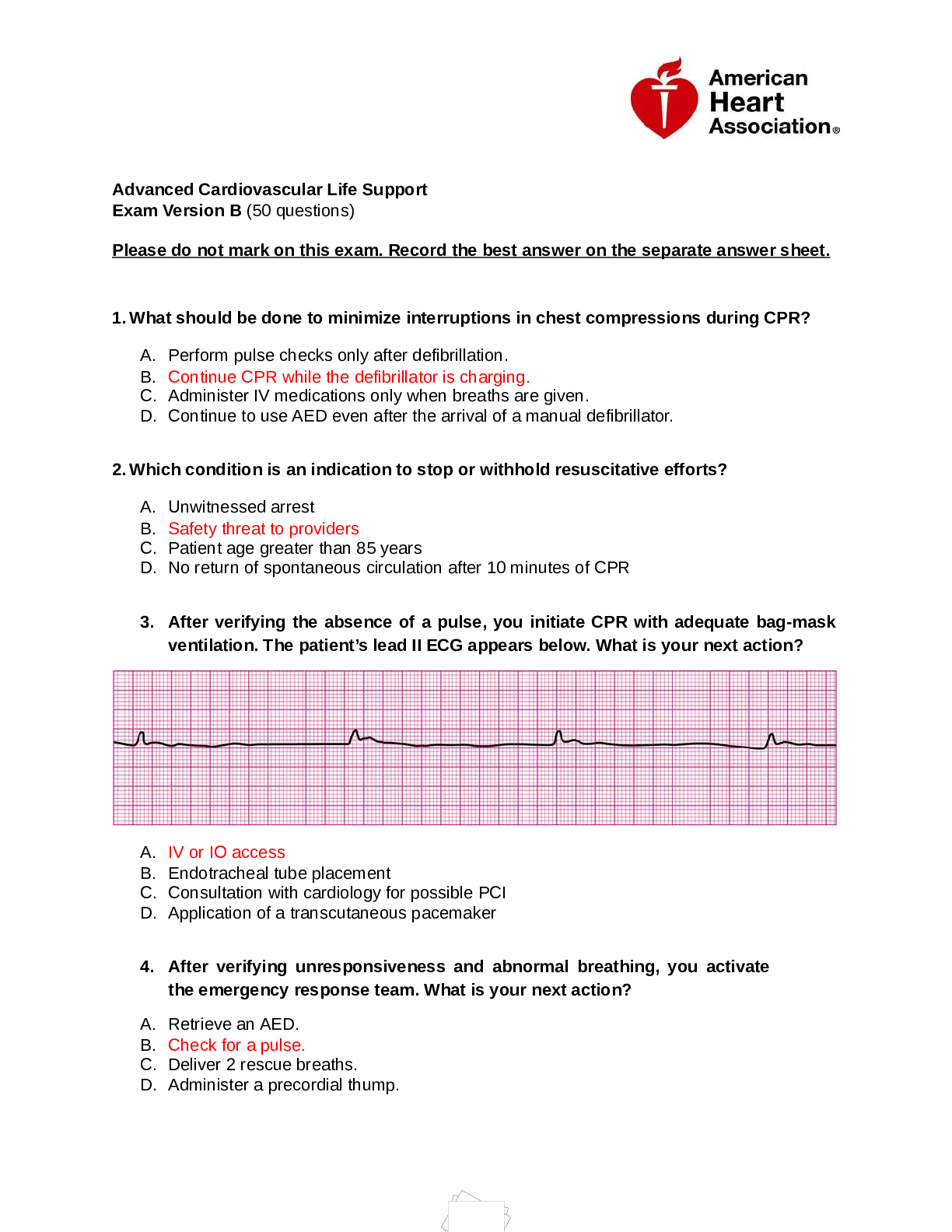
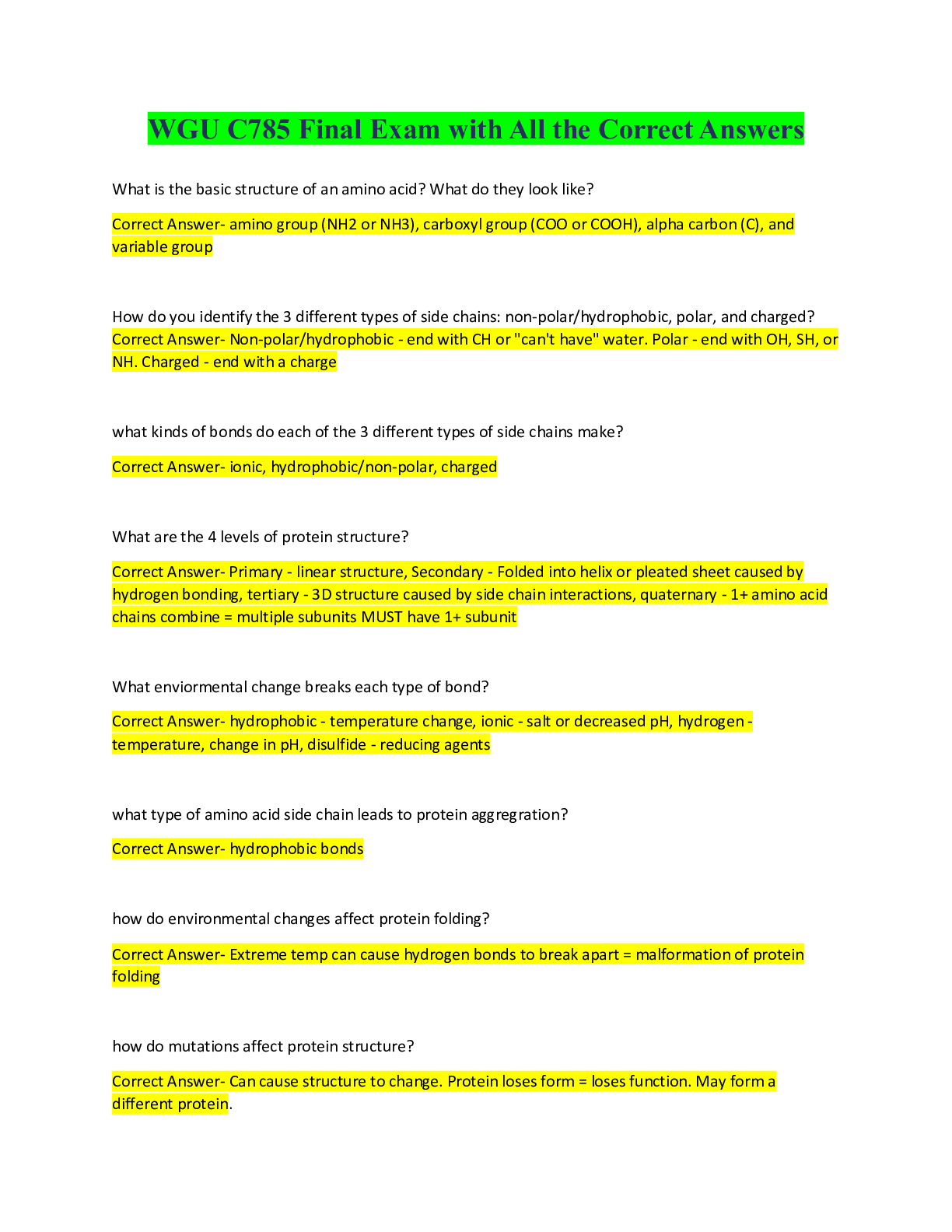
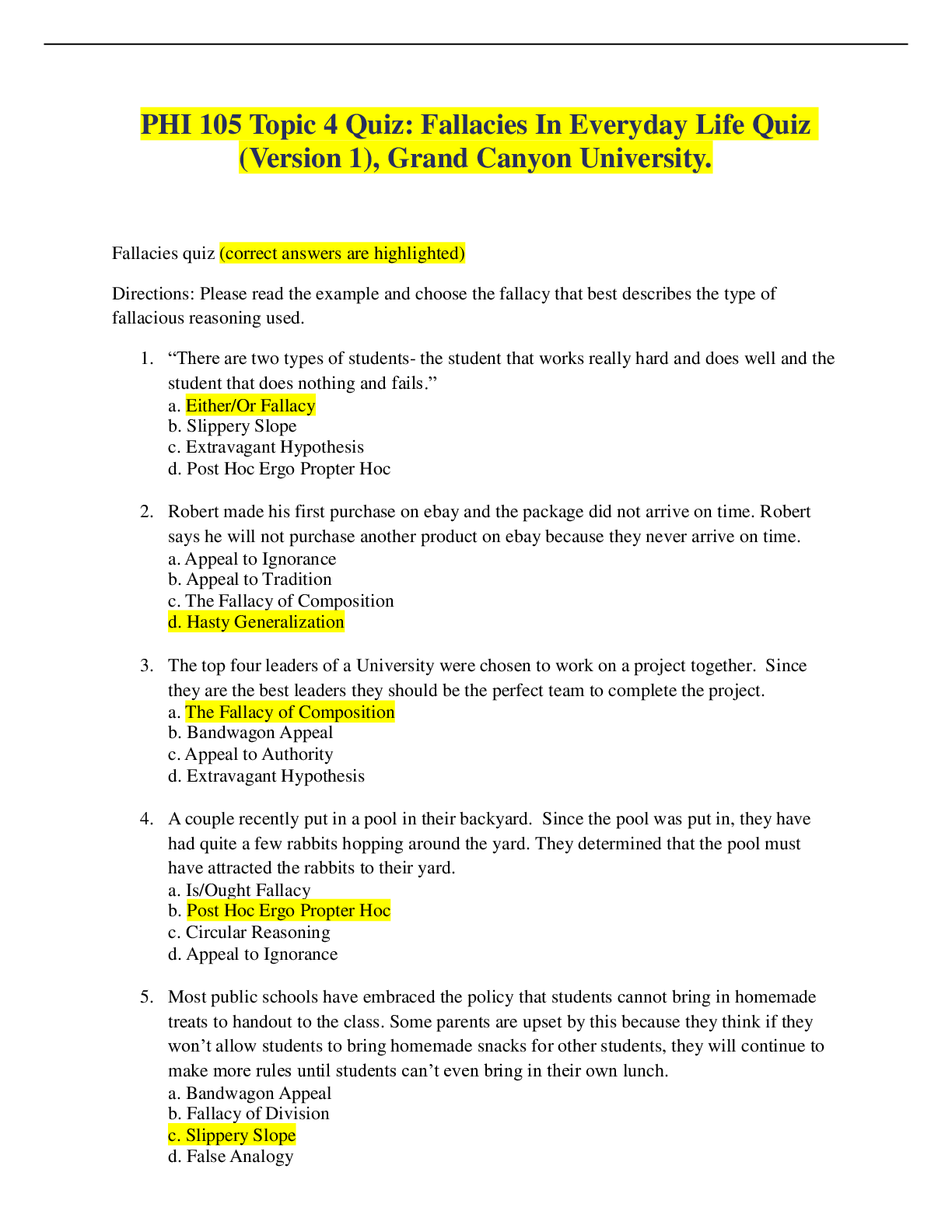
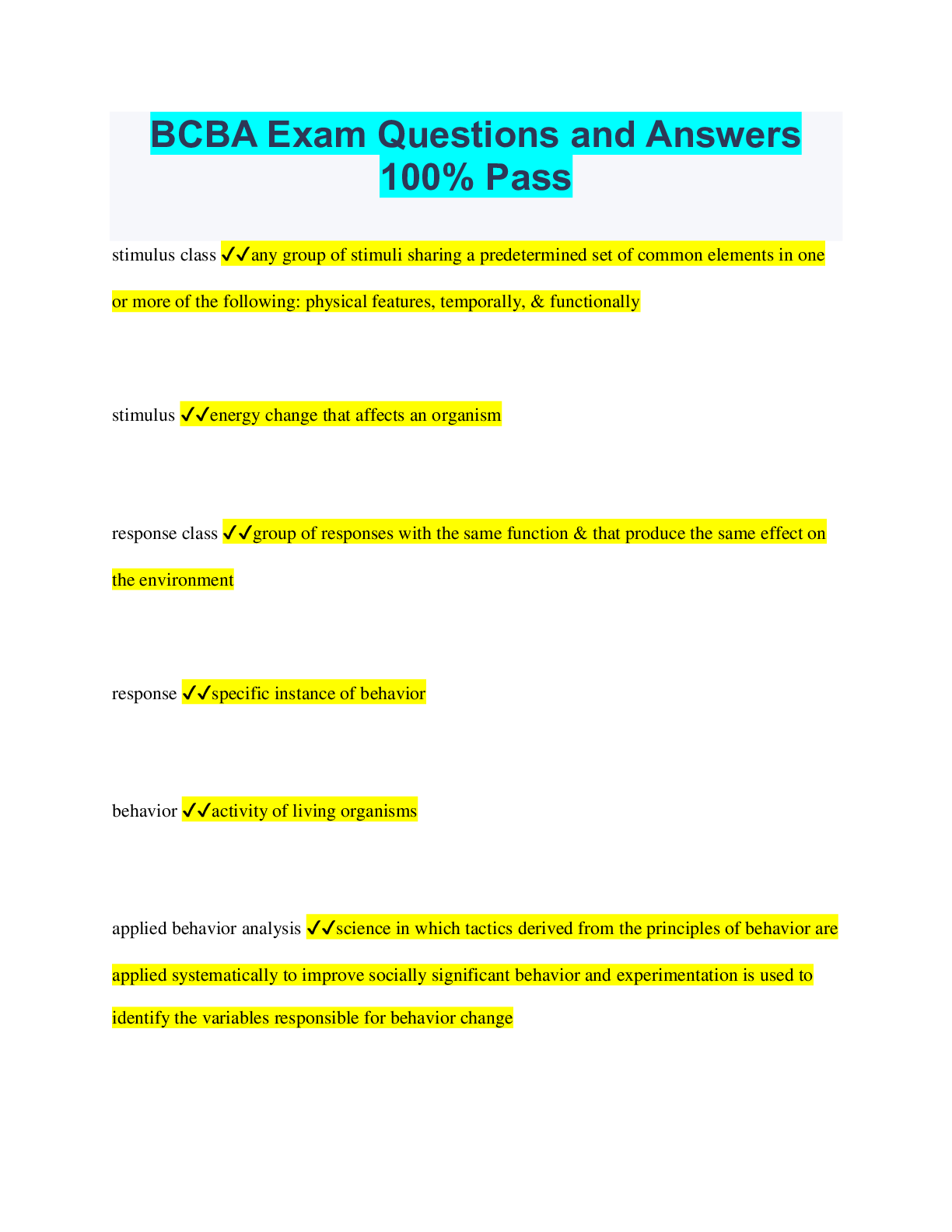
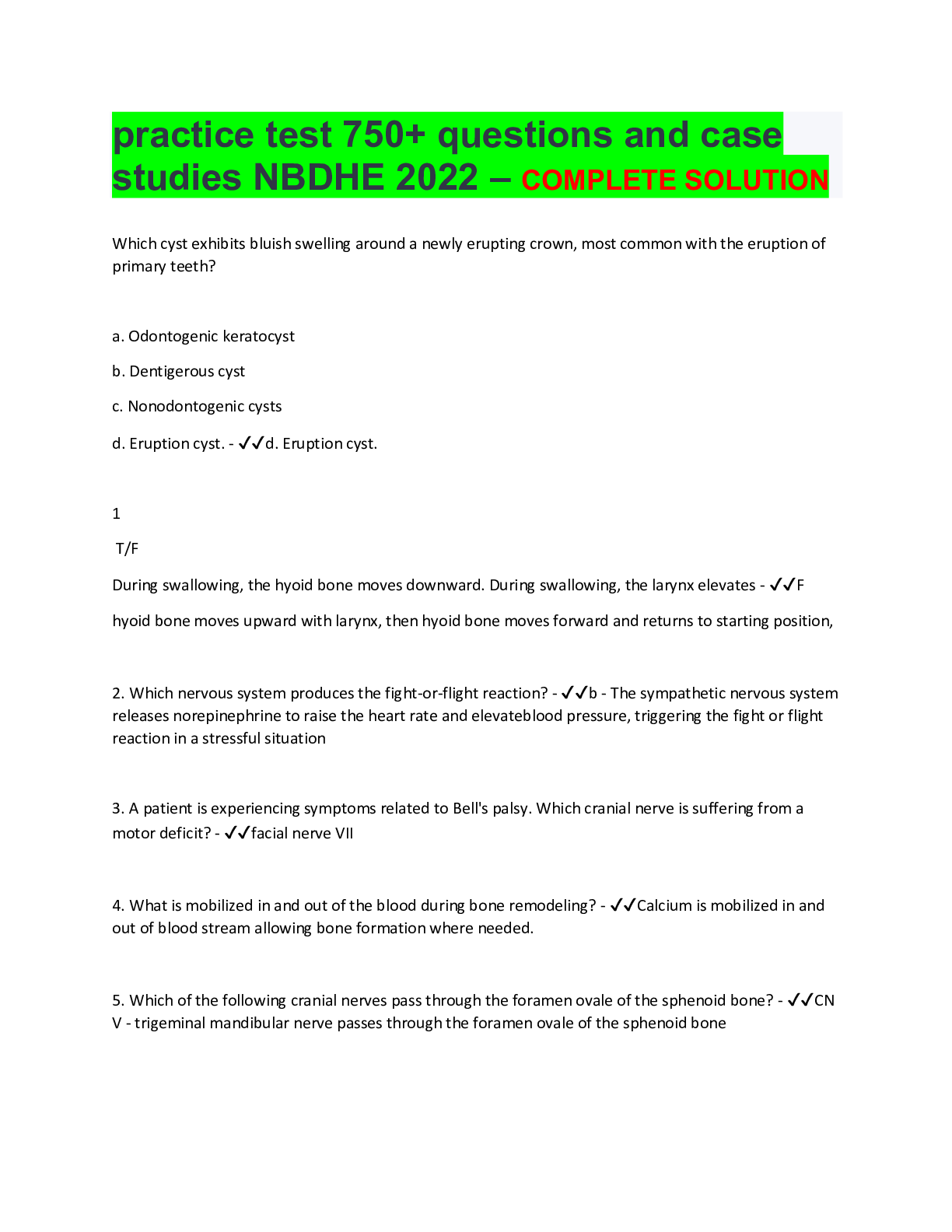
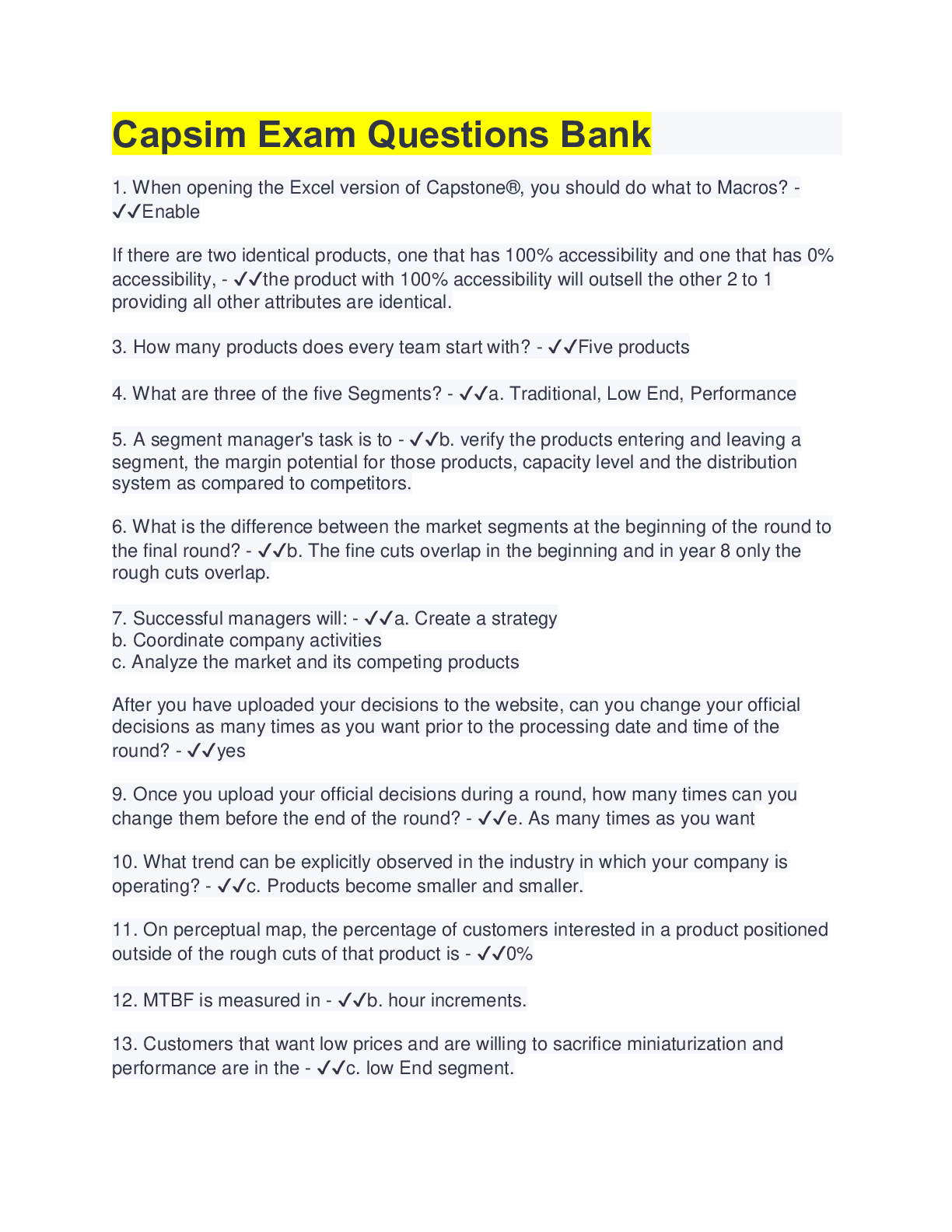
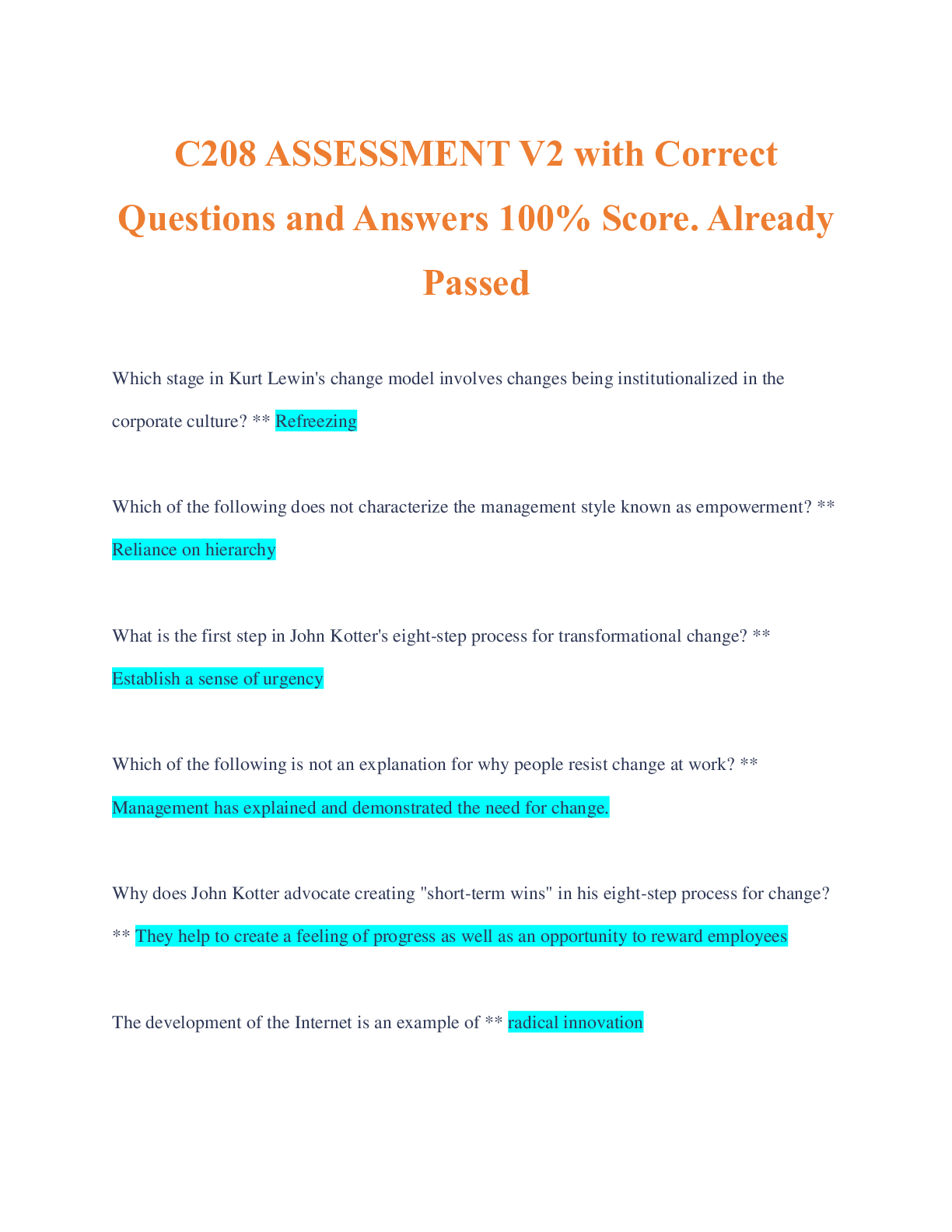
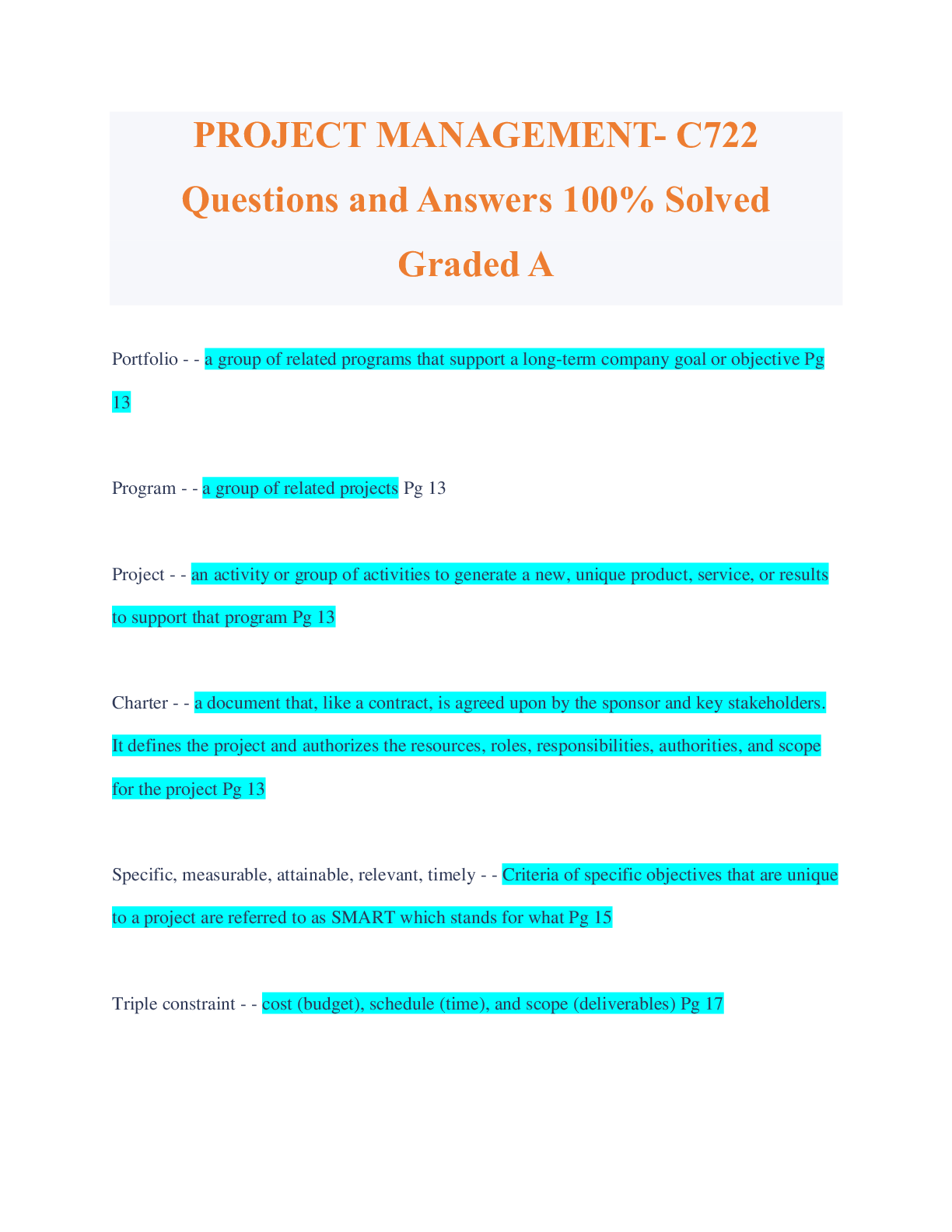
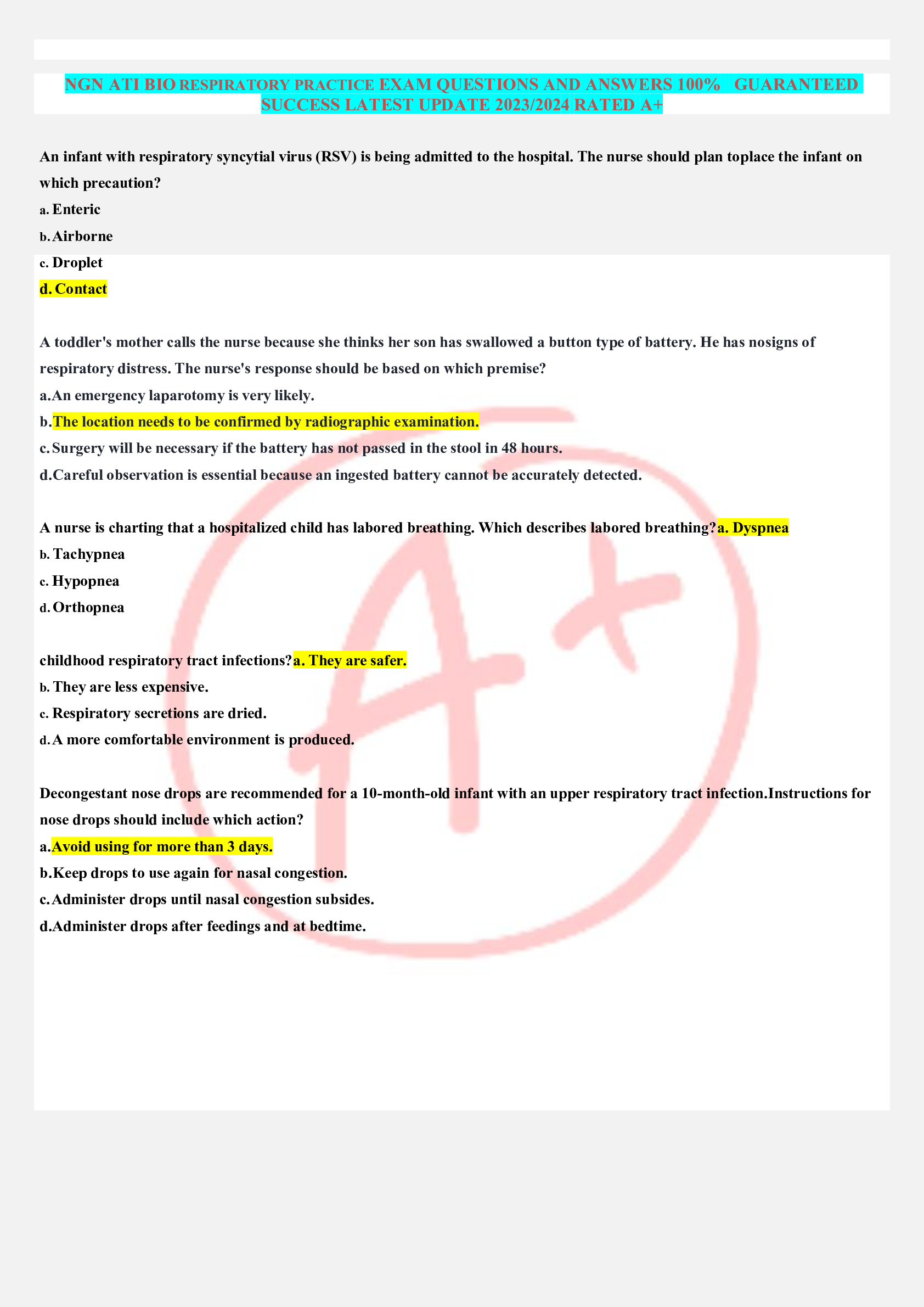
.png)
.png)
.png)
.png)
.png)
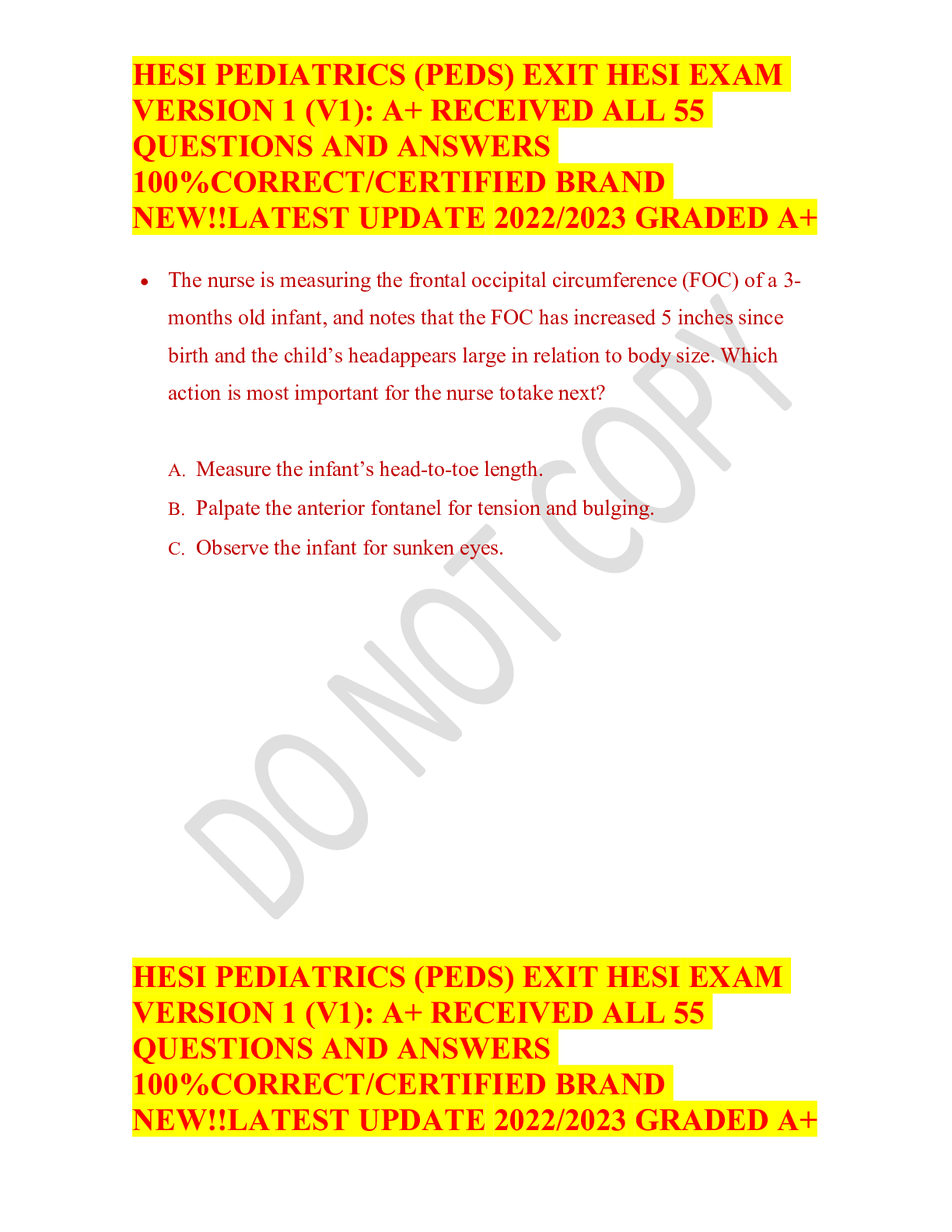
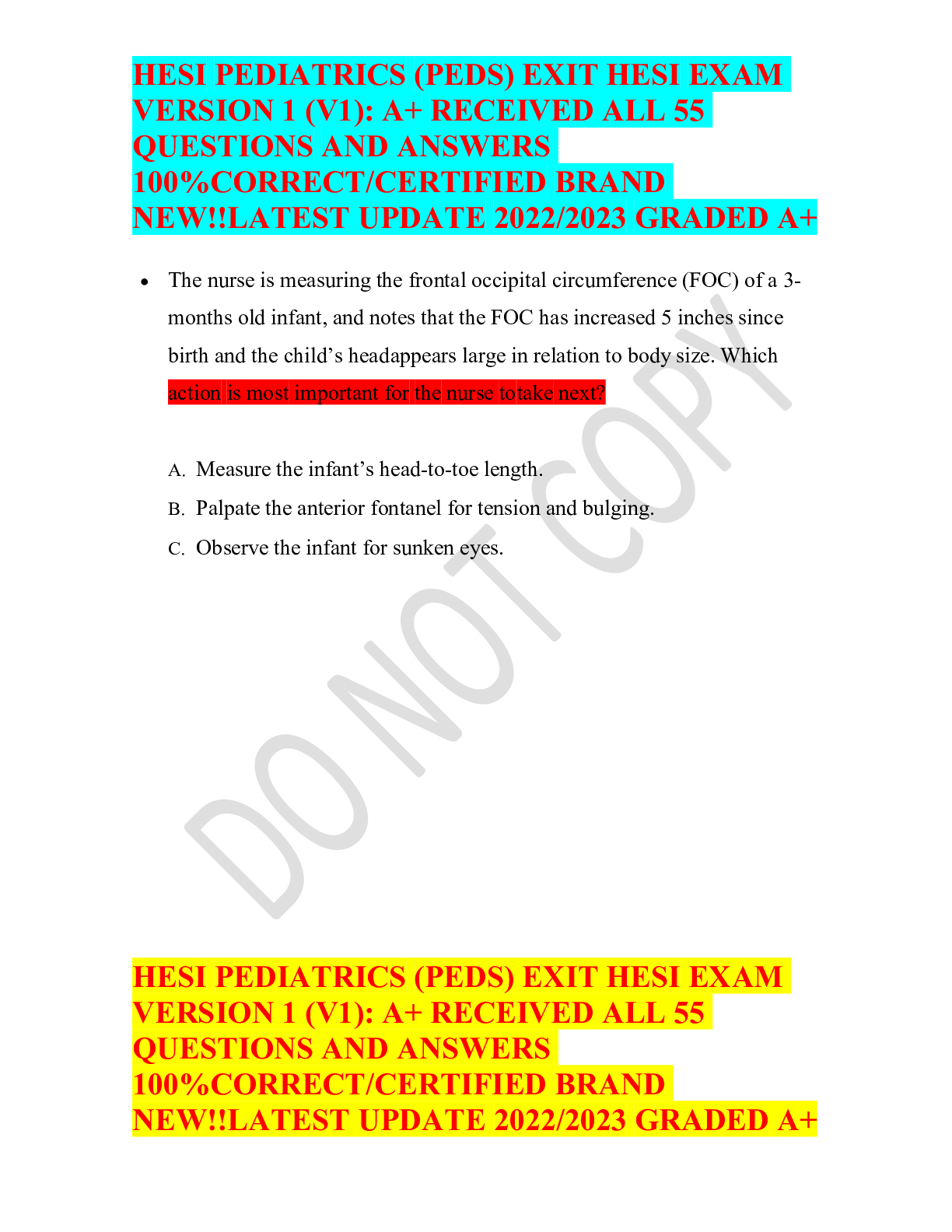
.png)
.png)

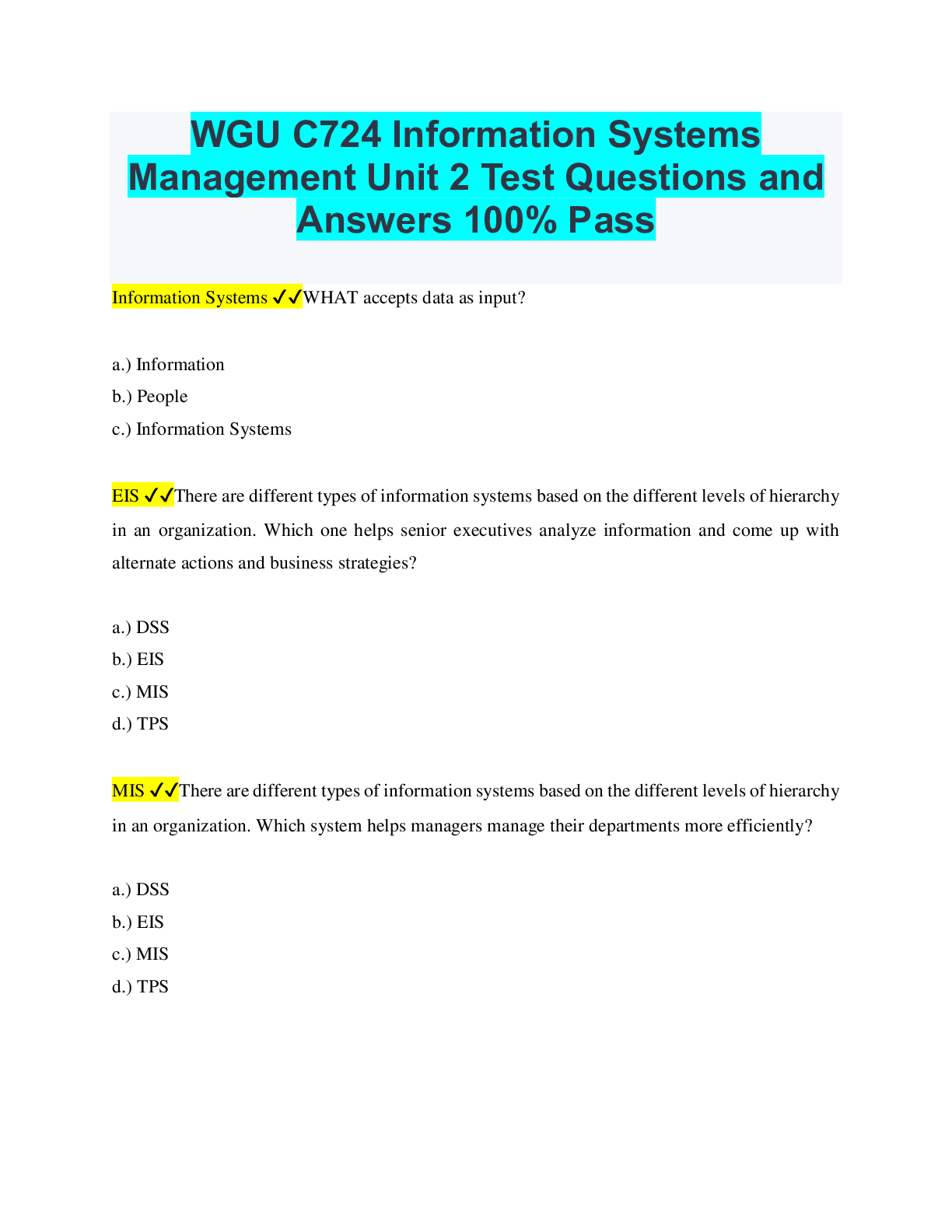
.png)
.png)

